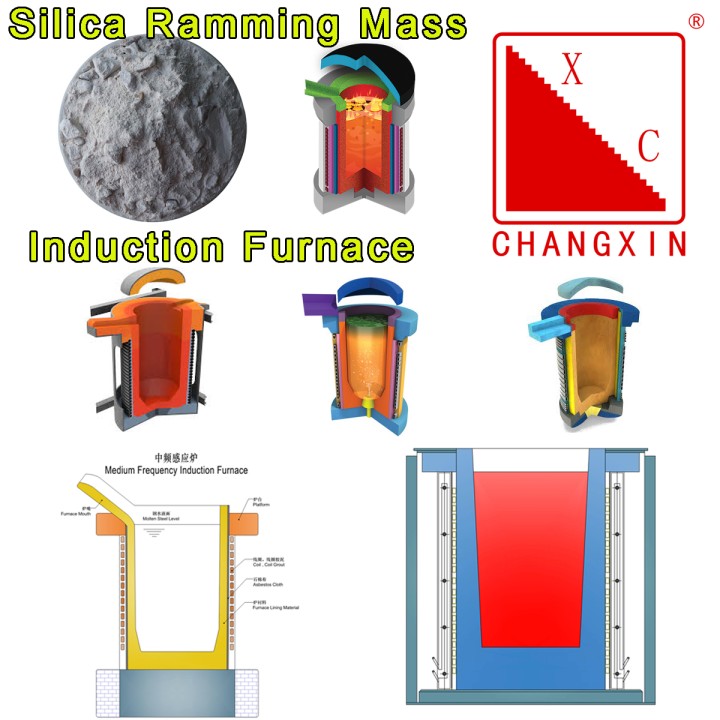Well, howdy there! Today, we’re gonna yak about somethin’ called furnace refractory. Sounds fancy, huh? Don’t you fret none, it ain’t rocket science. It’s just the stuff that lines them big ol’ furnaces, ya know, the ones that get hotter than a pepper sprout in July.
First off, pickin’ the right stuff for your furnace is mighty important. It’s like pickin’ the right wood for your stove – you don’t wanna be usin’ pine when you need oak. See, this here refractory stuff, it’s gotta be tough. Real tough. It’s gotta stand up to heat that’d melt your grandma’s cast iron skillet faster than you can say “biscuits and gravy”. This heat resistance thing, them smart folks call it “refractoriness.” Sounds like some kinda alien thing, but it just means it can take a whole lotta heat. Like, way hotter than your oven at home. We’re talkin’ furnaces and stuff.


Now, there’s all sorts of different kinds of this refractory stuff. Some’s like bricks, some’s like cement, and some’s even like playdough, kinda. The kind you need depends on what kinda furnace you got and what you’re doin’ with it. It ain’t one-size-fits-all, that’s for sure. You gotta think about how hot it’s gonna get in there, what you’re meltin’ or heatin’, and how often you’re gonna be firin’ that furnace up. It’s like bakin’ a cake, you need the right ingredients or it’ll fall flat, or worse, burn to a crisp.
- Bricks: These are the workhorses, the real sturdy fellas. They can take a beatin’ and keep on heatin’. You stack ’em up like buildin’ a wall, only this wall keeps the fire in, not out. Good for real hot jobs and steady temperatures.
- Castables: This here stuff is like concrete. You mix it up with water and pour it where you need it. It’s great for makin’ shapes and fixin’ cracks. Handy stuff to have around, for sure.
- Plastics and Ramming Mixes: Now these are kinda like clay. You can mold ’em and shape ’em how you want. They’re good for fillin’ in gaps and makin’ tight seals. They are used for areas where the furnace lining might be exposed to physical impact or movement.
But how do you choose the right one? Well, that’s where it gets a bit tricky. You gotta think about a few things. First, like I said, how hot is it gonna get? That’s the most important thing. Then, you gotta think about what you’re heatin’ up in that furnace. Some stuff’s harder on the lining than others. And last but not least, you gotta think about how long you want this stuff to last. You don’t wanna be replacin’ it every week, that’s for sure.
Strong refractory is key. I mean, what good is it if it crumbles the first time you fire up the furnace? You need somethin’ that can take the heat and the pressure, somethin’ that can withstand thermal shock – that’s when it gets hot real fast, then cold real fast. That kinda thing can crack a weaker material right in two. So, strength is a big deal.
Another thing to keep in mind is the chemical makeup of the stuff you’re heatin’. Some materials react with the refractory and can cause it to break down faster. It’s like puttin’ vinegar on baking soda, it just eats away at it. So, you gotta make sure the refractory you choose is compatible with what you’re cookin’ up in that furnace.
For a proper design of any refractory lining system it is essential that you know all about the furnace or kiln and how you’re gonna use it. The most important thing is the temperature and what’s being heated. These are the two most important factors when pickin’ the right refractory for your furnace, kiln or oven. You gotta get the whole picture, the type of furnace, how hot it gets, and what’s bein’ processed inside.
So, there you have it, a little somethin’ about furnace refractory. It ain’t the prettiest thing to look at, but it’s mighty important. Without it, them furnaces wouldn’t last long, and we wouldn’t have all the stuff they make. Remember to pick the right stuff for the job, and you’ll be good to go. And don’t be afraid to ask for help if you need it. There’s plenty of folks out there who know a whole heap more about this stuff than I do.


Anyways, hope this here explanation helped you understand a bit about furnace refractory. It’s important stuff, and picking the right kind can save you a whole lotta trouble down the road. Just remember, strong, durable, and the right fit for the job. That’s all there is to it.

